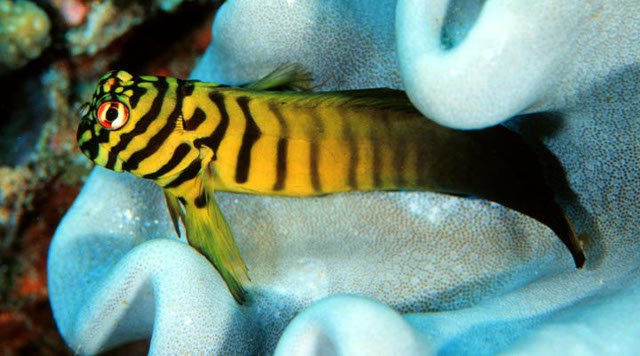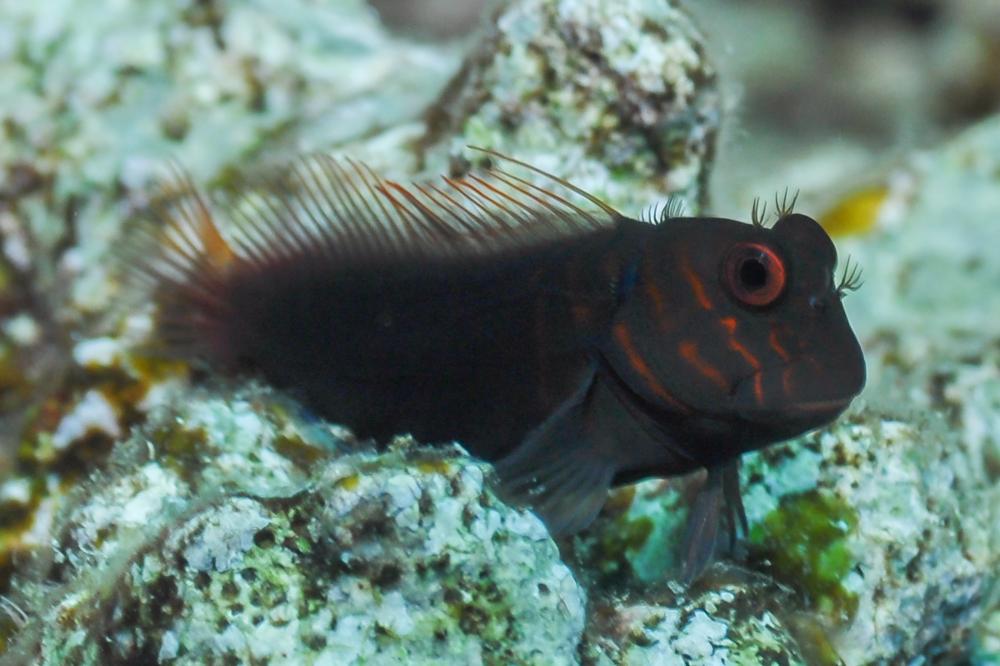Coral Farm Kuwait
Chestnut eyelash-blenny - Cirripectes castaneus
Chestnut eyelash-blenny - Cirripectes castaneus
لم نتمكن من تحميل توفر الاستلام
Cirripectes castaneus – البليني الكستنائي
Cirripectes castaneus المعروف باسم البليني الكستنائي هو بليني ذو أسنان مشطية قوي التحمل، يُقدَّره الهواة لقدراته في رعي الطحالب وسلوكه الممتع. يتميز بلون بني كستنائي إلى محمّر مع تبقعات خفيفة تضيف لمسة جمالية طبيعية إلى أحواض الشعاب المرجانية وأحواض المجتمع البحري.
الانتشار الطبيعي
ينتشر هذا النوع على نطاق واسع في منطقة المحيطين الهندي والهادئ بما في ذلك المحيط الهندي والبحر الأحمر والشعاب المرجانية في غرب المحيط الهادئ. يعيش في المسطحات المرجانية الضحلة وقنوات الأمواج والمناطق الغنية بالطحالب على أعماق تبدأ مباشرة تحت السطح حتى حوالي 10 أمتار.
الوصف
يصل طول البليني الكستنائي عادة إلى 9–12 سم. وكغيره من البليني ذي الأسنان المشطية، له رأس قصير مع زوائد لحمية صغيرة (cirri) فوق العينين وحول الرقبة وزعنفة ظهرية طويلة متصلة. لونه البني المحمّر مع التبقعات الفاتحة يساعده على الاندماج مع الصخور والطحالب.
السلوك والعناية في الأحواض
يُعد في الغالب مسالماً لكنه قد يدافع عن جحره أو شقّه المفضل. مناسب مع مجموعة واسعة من الأسماك واللافقاريات الآمنة على الشعاب المرجانية. في الطبيعة يجلس على الصخور ويرعى الطحالب الخيطية والحطام العضوي. في الحوض يجب توفير الكثير من الصخور الحيّة وأماكن للاختباء وقاع رملي أو من الحصى. يُوصى بحوض بسعة 30–40 جالوناً للفرد الواحد.
النظام الغذائي
يعتمد أساساً على الطحالب. قدّم له مجموعة متنوعة من الأطعمة القائمة على الطحالب مثل سبيرولينا، النوري (أعشاب بحرية مجففة)، ورقائق أو حبيبات نباتية عالية الجودة، مع كميات صغيرة من أطعمة بحرية مفرومة للحفاظ على صحته ومنع أي سلوك نقر للشعاب.
فوائد تربيته وتخزينه
-
مكافحة طبيعية للطحالب: ممتاز في رعي الطحالب الخيطية.
-
الصلابة وسهولة النقل: يتحمل ضغوط الصيد والشحن بشكل جيد نسبياً.
-
الحجم المدمج والشخصية: مثالي للأحواض المرجانية المتوسطة وأحواض المجتمع؛ سلوك “الجلوس” ممتع للمشاهدة.
Cirripectes castaneus – Chestnut Blenny
Cirripectes castaneus, commonly called the Chestnut Blenny, is a hardy combtooth blenny prized by aquarists for its algae-grazing ability and engaging behavior. With its rich chestnut-brown to reddish coloration marked by faint mottling, it adds subtle but natural beauty to reef and community tanks.
Natural Range
This species is widely distributed throughout the Indo-Pacific, including the Indian Ocean, Red Sea, and western Pacific reefs. It inhabits shallow reef flats, surge channels, and areas with abundant algae growth at depths from just below the surface to about 10 m.
Description
The Chestnut Blenny typically reaches 9–12 cm (3.5–5 in) in total length. Like other combtooth blennies, it has a blunt head with cirri (small fleshy tufts) above the eyes and around the nape, and a long continuous dorsal fin. Its overall brownish-red body with lighter speckling helps it blend with rocks and algae.
Behavior & Care in Aquaria
Mostly peaceful, C. castaneus is territorial around its chosen hole or crevice but is otherwise compatible with a wide variety of reef-safe fish and invertebrates. In the wild it perches on rocks and grazes on filamentous algae and detritus. In the aquarium it should be provided with plenty of live rock, hiding places, and a sand or rubble substrate. A tank of at least 30–40 gallons is recommended for a single specimen.
Diet
Primarily herbivorous. Offer a variety of algae-based foods such as spirulina, nori (dried seaweed), and high-quality vegetable flakes or pellets, supplemented with small amounts of finely chopped marine meaty foods. Keeping it well-fed helps maintain its health and prevent it from nipping at corals.
Key Benefits for Stocking
-
Natural Algae Control: Excellent filamentous algae grazer.
-
Hardy & Transportable: Tolerates capture and shipping stress relatively well.
-
Compact Size & Personality: Ideal for medium reef or community setups; interesting “perching” behavior.
يشارك




